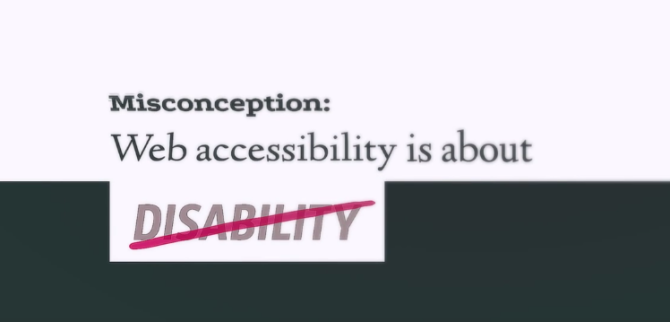The Importance of Website Accessibility
For many people in the world, the internet plays a vital role in our day-to-day lives. For the impaired, it may seem daunting to create a website that caters to their needs.
Google has already set forth their rules for website owners in that they instruct website owners only to create websites that are useful and interesting to readers. They have made it a point to ensure that the end user is kept in mind in not only the content creation but also usability of the website itself.
Gone are the days when website owners can create websites for the sheer purpose of getting a lot of traffic. Now, in the design phase of website creation, business owners should consider the statistics in their demographics, so they do not exclude those visitors who suffer from visual impairment to any degree.
The National Federation of the Blind uses a broader scope when referring to those who suffer from visual impairment. Being blind is no longer considered the inability to see at all, as the organization documents statistics of those in the United States with some degree of impairment.
In 2013, the organization counted over seven million adults who reported being living with visual impairment. Website accessibility is the key to fostering reader engagement and usability among the entire nation – not excluding anyone concerning their level of impairment.
It makes great business sense to create different methods of content delivery when handling visually impaired visitors. Using a large font may aid those who are unable to read smaller text while color coding action buttons might help those who are color blind. Some companies offer screen readers that tell the visitor everything that is on the website visited.
A good example is a website called What Camping Tent that manage to find a good balance between usability for regular visitors as well as for impaired people. They are following the web best practices by keeping content really concise, with the use of headers to facilitate skimming and quick reading. They also always use fonts that are 16 px and more to make sure content can be easily read on mobiles and third party devices.
Mark Jonson, the owner of the website and camping blogger told us that having a disable child at home, this was just a no-brainer for him as a wish to improve the use of the world wide web for impaired people.
Websites these days cannot afford to lose out on over seven million visitors, so it only makes sense to take website accessibility into mind in the planning stages of your business. Since there aren’t many websites who cater to those with disabilities, the market demands sites to create content for usability by impaired individuals. In doing so, you establish authority in your niche and give the end user what they want – and that is web accessibility without the hassle.
More on the topic with website accessibility expert David Berman:
